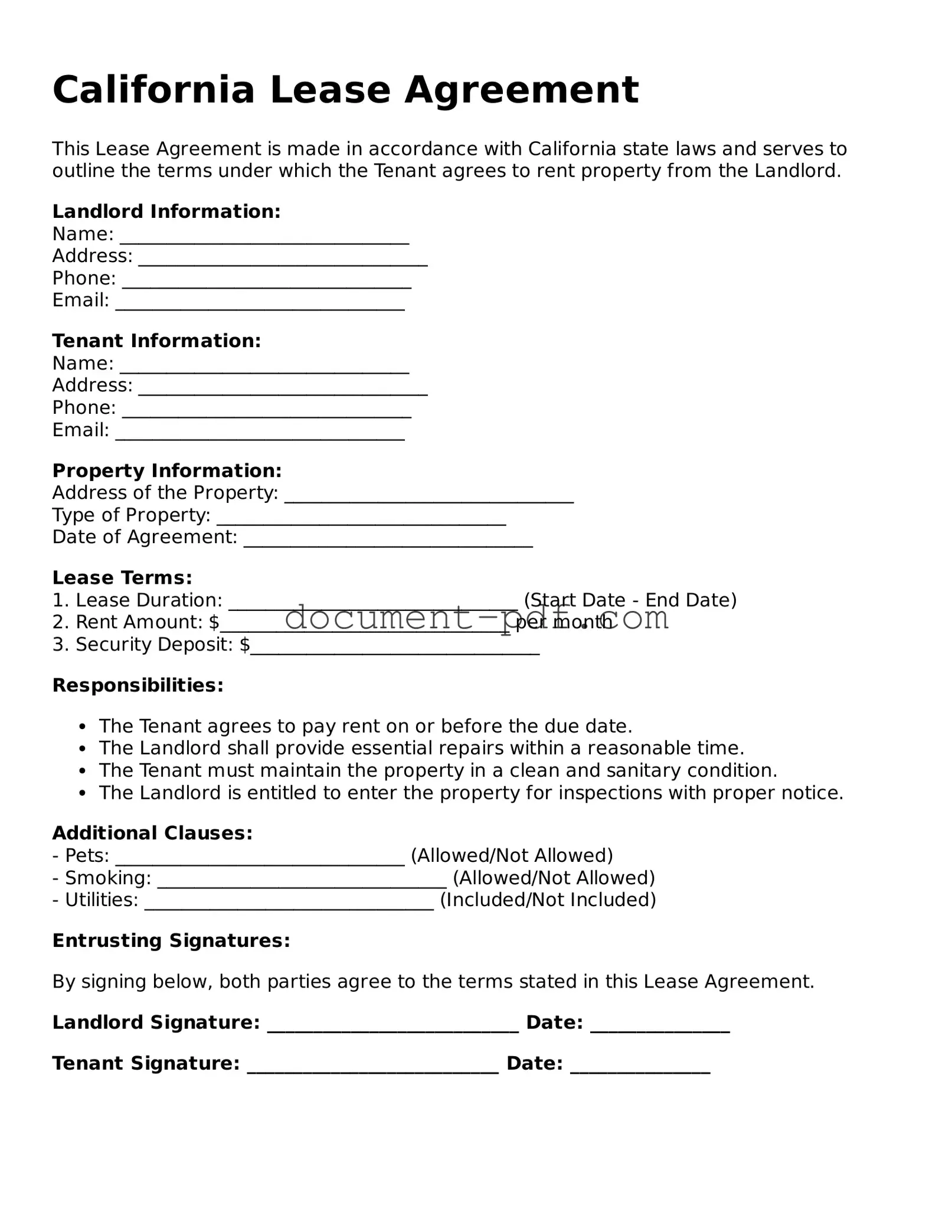California Lease Agreement
This Lease Agreement is made in accordance with California state laws and serves to outline the terms under which the Tenant agrees to rent property from the Landlord.
Landlord Information:
Name: _______________________________
Address: _______________________________
Phone: _______________________________
Email: _______________________________
Tenant Information:
Name: _______________________________
Address: _______________________________
Phone: _______________________________
Email: _______________________________
Property Information:
Address of the Property: _______________________________
Type of Property: _______________________________
Date of Agreement: _______________________________
Lease Terms:
1. Lease Duration: _______________________________ (Start Date - End Date)
2. Rent Amount: $_______________________________ per month
3. Security Deposit: $_______________________________
Responsibilities:
- The Tenant agrees to pay rent on or before the due date.
- The Landlord shall provide essential repairs within a reasonable time.
- The Tenant must maintain the property in a clean and sanitary condition.
- The Landlord is entitled to enter the property for inspections with proper notice.
Additional Clauses:
- Pets: _______________________________ (Allowed/Not Allowed)
- Smoking: _______________________________ (Allowed/Not Allowed)
- Utilities: _______________________________ (Included/Not Included)
Entrusting Signatures:
By signing below, both parties agree to the terms stated in this Lease Agreement.
Landlord Signature: ___________________________ Date: _______________
Tenant Signature: ___________________________ Date: _______________
